-- Page 2--
The following photo shows a marked tree which was found several
years ago by Rey Kleinman. He found it East of Strawberry Reservoir.
He calls it the Los Padres tree. The inscription, although of unknown
age and origin, states that the Fathers passed this way.
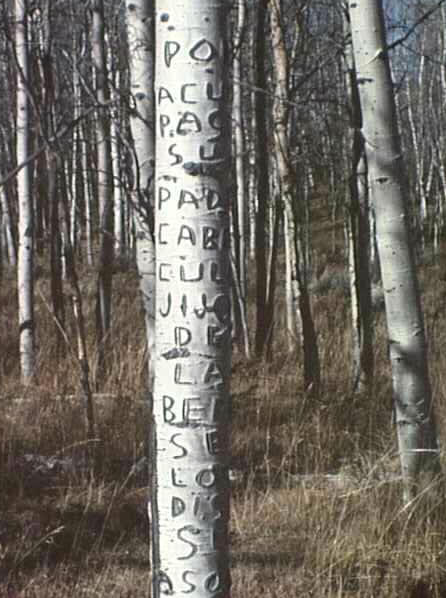
Rey gave me the GPS for the Padres tree:
504,679.60M E. 4,443,502.94M N. Z12 (in the UTM format).
Are you ever intrigued by a mystery?
Do you ever touch a piece from the past and wished it could speak to you?
Many of us are intrigued and that is one thing which drives us to search for answers.
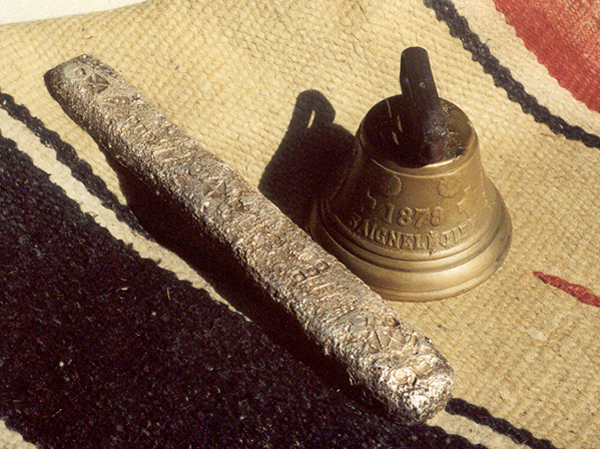 |
This bar and bell were found in the Uinta Mountains.
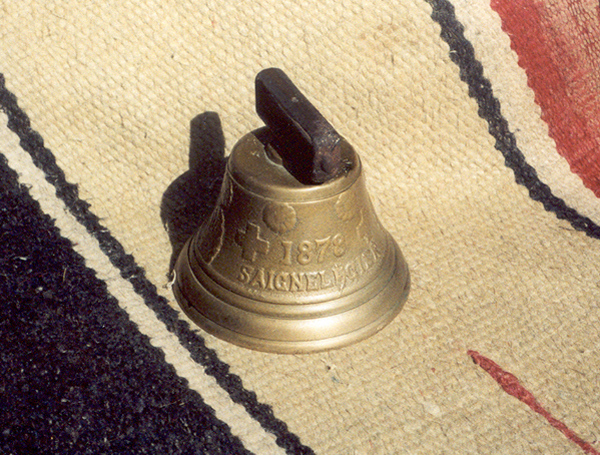 |
This French bell was found near the headwaters of the Bear River in the Uinta
Mountains in 1972.
It was found by a relative of a friend of mine. My friend gave me permission
to photograph it
and share it with you. Thank you Shane.
You may be wondering whether this bell is authentic or not.
Greg Gardner, a friend of mine, emailed me on July 24, 2005 and cleared it
up.
"Dale, The bell you show on your website may not be as historical as
it appears.
I also found a bell in 1985 near the Timothy lakes. I have done a lot of research
on it and know the history of those bells. They have been found all over the
US and
Canada and are not really that rare. The Saignelegier bells were cast in Saignelegier,
Switzerland in 1878 and were used as cow bells in and around that area. I
have been
to Saignelegier, Switzerland and have seen one of the original bells and it
definitely
looks different than mine and your bells. Someone made a similar mold here
in the US
and cast bells for Sears who sold thousands of them in the mid 1900's.
What we are all finding are bells sold by Sears."
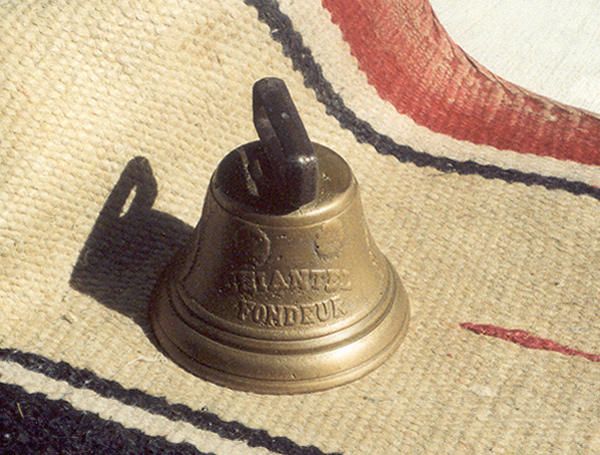 |
Here is a view of the opposite side.
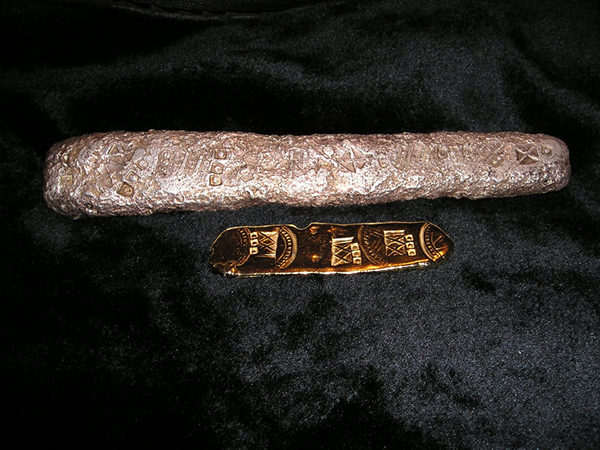 |
The gold bar in this photo is a replica of a Spanish gold bar found at the
salvage site of the
1622 Spanish galleon the Nuestra Senora de Atocha found off the Florida coast.
The purity of the original gold bar was 21 and 3/4 carat. Symbolized by these marks: XXI...
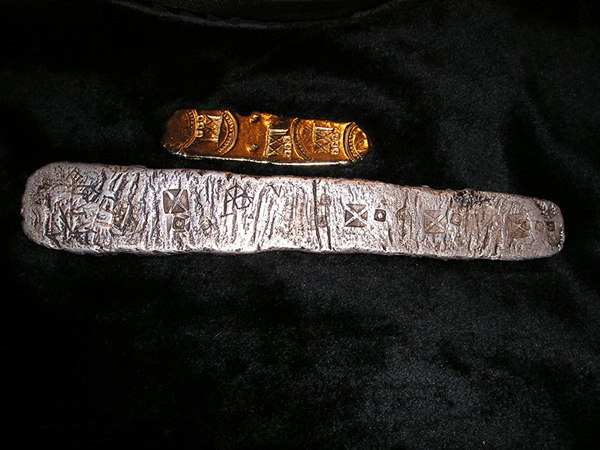 |
The other bar is an actual Spanish silver bar found in the Uinta Mountains in the 1950's.
Over the years we have learned several things about it.
1. The former owner once declined a $10,000.00 offer for it.
2. The purity markings on it are similar to the markings on the
gold bars found at the Atocha site. It is marked like a
gold bar instead of a silver bar. It is marked 10 and
1/4 carat. (X.)
3. The symbols at the left end of the bar, in the above photo,
were most likely the owners mark.
4. The odd symbol in the middle may have been the shipper's
mark.
5. In the word HISPAN the S,P and N are backwards.
Through research we were able to determine some of
the cob coins found at the Atocha site were minted
by an individual who was dyslexic. This may have
been the case here as well. Reference "Cob Coinage"
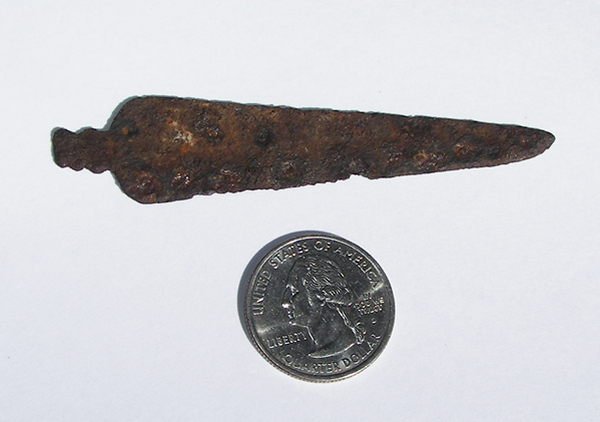 |
This metal arrowhead was found by my friend's father around 1982 in the Uinta
Mountains.
A Spanish helmet and other artifacts were also found in the rock pile with
this iron arrowhead.
(A quarter was used in this photo for size comparison.)
(Picture taken 8/16/08)